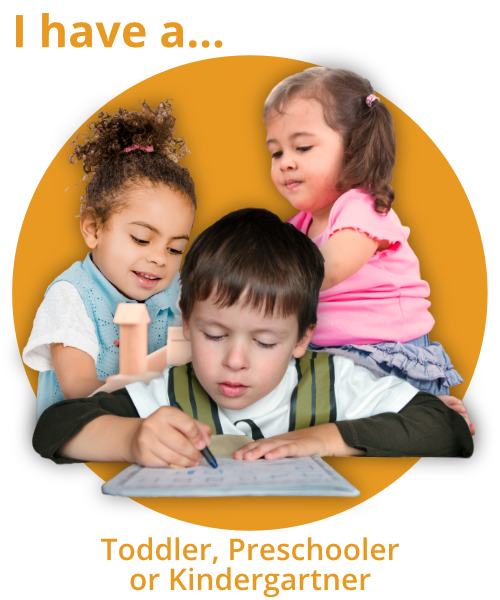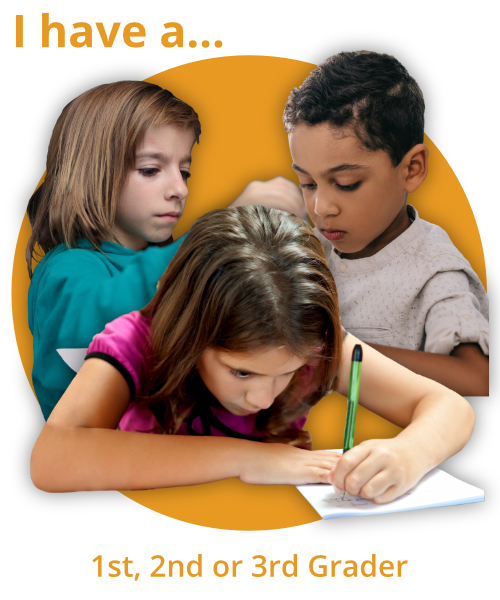Yes, Your Child Needs to Learn How to Sew
Someday your child is going to get a hole in a sock. Then, his eyes will get bright and those happy, rosy cheeks will appear. "I know what to do," he'll say with enthusiasm, "Just let me get the needle and some thread!"
Teaching your child to sew is really not so hard, so don't be intimidated. It's also a skill that has long-lasting educational benefits. In Montessori, sewing is part of our practical life curriculum. Here's how to get started.
I'm Aubrey Hargis, Montessorian and mom of two. We are homeschoolers, but we don't follow a prescriptive curriculum. We stitch our minutes into hours, hours into days, days into months, and months into years that nurture our entire family's interests. I am always learning just as much as the kids, and I love that part of homeschooling -- because education is a journey we take with our children, and the opportunities for learning start over every day.
Hey Sweet Friend
We’ve got lots to talk about today--I’m ready to walk you through the practical steps of how I introduced sewing to my children, based on experiences I had teaching children in the classroom, as well! We’ll get into the details of how to scaffold the skills and introduce the correct tools.
But first, if you’re new here, welcome! It is my deep belief that every child deserves a fantastic education--and I believe that if we as adults work together to learn about what is developmentally appropriate for our children, we can make this a reality. I know everyone is capable of teaching their own child, no matter your background or education. Whether you are supporting your child who is in school or homeschooling, you can bring Montessori home!
We’re getting ready to start our 8 week intensive dive into homeschooling with children 2.5-6, Homeschool of the Redwoods: Primary! Our next live course will not occur until the Fall--so if you want to join us, make sure you sign up before March 7th. If you want to see what we’re all about first, you can check out our FREE homeschool planner and mini-course.
Meet Irene
Each week, I like to feature someone who is a part of our Child of the Redwoods community! The participants in this community are such a huge part of what makes it special. This week, we’re sharing advice and inspiration from Homeschool of the Redwoods Alumna and Constellation member Irene, Montessori Mom of 2! You can learn more about Irene here.
Practical Life: A Montessori Cornerstone
The work of Practical Life is really any kind of task, movement, or intentional activity that a human being does in order to become successful in life, manage their household, or care for themselves and other people or their environment. This can be as simple as washing dishes or more involved, like washing a car! We teach these foundational skills in the early years--from 0-6--so that they can be successful as they get older.
We don’t talk about it as often with older kids, but practical, real life really does continue all the way through the end of life. We're always learning new practical skills or learning new hobbies that teach us things that make our lives better. The challenges scale as you get older; rather than mopping one part of the floor, they may mop the whole room or the whole house. As teenagers, they may be learning to budget, or working on their own entrepreneurial skills.
Why Teach Your Child How to Sew?
Sewing is at heart a practical life skill. As adults, basic sewing skills enable us to repair things that are damaged by wear and tear. The button that falls off: we would have to rely on somebody else to do it, or find a tailor, or just go without the button if we do not know how to reattach it. We can teach even our youngest children these skills--to repair, or even make their own clothes!
It’s not just practical, it’s sustainable. It is a real shame that we live in a culture where we have so much disposable clothing. If we all worked to make those small repairs to garments instead of giving or throwing them away, we would reduce waste and shift the pace of fast garment production, too. We want our children to grow up feeling capable of helping to mend their things and to make things last--and teaching them to sew can help them to be more independent in that way.
It also teaches them fine motor skills. Very young children's hands don't look like ours-- their bones are not fully formed yet. Their hands are shorter and sturdier than ours, but also kind of loose and bendy because of that. It takes practice to strengthen those hand muscles and refine the movements that will eventually help the child to hold a pencil, and perhaps someday, a scalpel or a paintbrush or a violin. Sewing definitely fits the bill!
It allows them to practice sequencing. Children are learning that each skill has a process, from beginning to end. Sewing is literally linear: you are starting at the beginning, traveling through the middle and then you end and tie the knots and snip off the cord, and you are done with that part of the project! It provides a visual representation of the projects beginning, middle, and an end. It also helps the child get used to listening to the directions first, and even to practice predicting next steps in their head! There is immense pride and satisfaction in having mastered the sequence needed to complete something from start to finish.
A sharp needle teaches them how to be careful with sharp objects. I feel like I have to say: they probably are going to prick themselves with the needle at least once. Even adults do it sometimes.The more we give them real things, even things that are a little bit risky, to explore, we are actually teaching them to not be afraid, and to have care and precision when working with these tools. If children are never given these sharp objects, and instead only ever use large, blunt ones, they're never going to be as careful with them as if you had given them the opportunity to use something that's very sharp. This is true with most sharp things: a knife, a glass that could be dropped and broken, a needle.
How To Develop Sewing Skills
We don’t start them off straight away on our straightest, sharpest needle. We scaffold the skills. You want to start when your child is a toddler with something large--like a wooden threading block which they can weave a needle in and out of, and work with you to unthread it, so they can see how to untangle and untie the thread.
Next, you might progress onto stringing beads. Rather than a needle, you might try a shoelace with a plastic aglet, or a string with some glue at the end. You start with larger beads, and as your child masters that size, you shift to beads with a smaller and smaller aperture. This helps the child realize that when they push the needle through an object, they can receive and retrieve it from the other side.
A great next step is lacing cards! You can make these yourself at home with just a hole punch and some yarn. Get a piece of cardstock or chipboard, punch a few holes in there in a line. Give your child some yarn; you can even tie that yarn to one of the holes to limit the amount of yarn they are using. They can then practice going in and out, weaving up and down through the holes!
After this, you move onto a loosely woven fabric! Burlap is nice for this. You will also need a large, blunt needle (can be plastic or metal), and either yarn or embroidery thread. You could use an embroidery hoop if you wanted; I think it is optional. I always just used a large piece of burlap, and modeled moving the needle in and out of the fabric, and then let them explore moving it--in neat stitches, or artistically all over the fabric! When they’re ready for a new point of interest, you can introduce pony beads, and model threading the needle through the fabric, putting on a pony bead, and then going back down through the fabric again so it is secured. If you don’t want to save the project, you can always snip the yarn and remove the bead!
Once they are comfortable with the manual action of stitching up and down, you introduce a medium weight fabric--a cotton or light canvas or broadcloth, nothing too heavy. You help them thread the (sharper) needle if needed with embroidery thread, and practice tying knots--either in just one end of the thread, with the other floating freely (they will need to be attentive to that loose end!) or tying both ends together.
This is when you can start introducing stitches! The running stitch is the basic one that probably everyone knows, but there are many stitches to teach. Once they can do this, they are ready to try making something. Felt can be nice for these projects -- you could do a basic pillow, or one in a fun shape! We used to like to make orange pumpkins at Halloween, apples for Autumn, ornaments for our tree. You just cut two of the shape, have the child stitch almost all the way around it, stuff it (with wool, or fabric scraps, or cotton, or old newspaper--whatever works), and then sew it closed!
This can inspire other fun collaborative projects; like making costumes. Grab some scraps and brainstorm together! We would just make a very, very simple costume out of felt that my kids helped design, adjusting the pieces to fit as we went. It was great to model creativity and the sewing and design process. These are SIMPLE, but fun!
Wait until your child has really enjoyed and mastered those hand sewing skills before introducing the sewing machine. For us, this was in the second plane--around Elementary age. It’s okay to slow down and let your child stay at one stage for a long time. Remind yourself that it's not about learning every single technique, or being super proficient quickly. It's about taking your time enjoying learning the skill, and appreciating the effort that's involved. When they’ve learned those processes, they look at the clothing and other fabric items they see in stores with a new light. They know to consider before throwing something damaged away: can I repair this? Could I reuse it? This confidence is incredibly valuable.
Gratitude
Today, I am grateful for sharp things. I'm grateful for getting my foot cut by glass. That's a hard one to say, but I am! You know why? Because it is giving me a life lesson; teaching me how to do something, carry something more precisely, to be more careful and mindful of my movements and of how I tend my environment.


